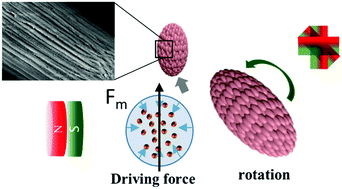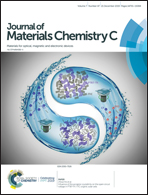Rugby-ball-like photonic crystal supraparticles with non-close-packed structures and multiple magneto-optical responses†
Abstract
Self-assembly of non-spherical building blocks offers a potential route to photonic crystal supraparticles (PCSs) with novel structures and optical properties. However, experimental fabrications of anisotropic-particle-based PCSs have rarely been demonstrated owing to the requirement of additional control over the particle orientation during the assembly process. Here, we develop a spatially confined magnetic assembly strategy for the tailored assembly of ellipsoidal particles into PCSs with unusual non-close-packed structures. Detailed studies reveal that the transition of these metastable structures into close-packed structures is kinetically inhibited during the drying process owing to the synergy of spatial confinement and magnetic alignment. Unlike conventional PCSs, the nanoellipsoid-based PCSs exhibit anisotropic optical properties and multiple magneto-optical responses. The present work not only provides a model system for studying colloidal assembly under spatially confined conditions but also greatly extends the family of PCSs with interesting structures and properties, bringing new opportunities for applications in various areas.



 Please wait while we load your content...
Please wait while we load your content...